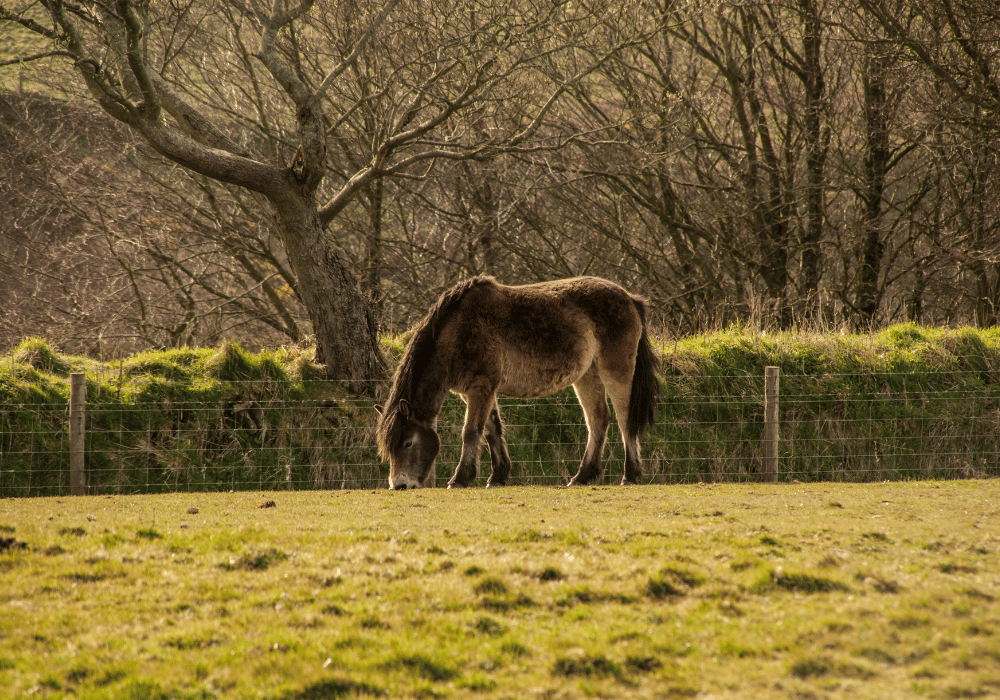Laminitis is a painful condition that affects horses’ feet and can lead to serious complications if left untreated. It is caused by inflammation of the laminae, which are the tissues that connect the hoof wall to the third phalanx (coffin/pedal bone). The condition can be caused by a variety of factors, including overfeeding, concussion, or even infection. Early intervention is key to a positive outcome, so it is important to recognise the early signs. This guide outlines the main symptoms of laminitis in horses.
What Causes Laminitis in Horses?
Laminitis is when the sensitive laminae, which connects the pedal bone to the hoof wall, becomes inflamed, damaged, weakened or stretched, so that the pedal bone comes away from the hoof wall. It may drop or rotate inside the hoof, and in very severe cases the pedal bone can fall through the hoof.
Common causes of laminitis include:
- Obesity
- PPID (pituitary pars intermedia dysfunction)
- EMS (equine metabolic syndrome)
- Concussion or abnormal weight bearing - for example, too much work on hard ground or overloading one leg due to lameness or injury in another area
- Diet - gorging on spring grass is noted to trigger laminitis, but a high sugar diet in general is also a major factor
- Poor shoeing or foot trimming
- Breed and genetic disposition can also make some horses more susceptible to laminitis
Find out more about what causes laminitis in horses in another one of our blogs.
What Are The Symptoms of Laminitis in Horses?
There are a number of clinical signs that could indicate laminitis. Whilst some of these symptoms are more obvious, horse owners should be aware of the more subtle signs of laminitis. Laminitis can begin long before the trademark symptoms develop, and detecting the condition early will make a positive outcome more likely and help minimise suffering.
Subtle Symptoms of Laminitis:
- Reluctance to turn
- Change in behaviour or temperament
- Shortened stride or stiff gait
- Reluctance to pick up feet
- Shifting weight from foot to foot
- Abnormal heat in the foot
Visible Signs of Structural Changes in the Hooves
Horses with chronic laminitis may not always display signs of pain - episodes can flare up and reoccur several times due to the long-term changes in the structure of the hoof. However, chronic laminitis symptoms may be visible on inspection of the hoof:
- Changes to the shape and angle of the hoof
- Rings on the outer hoof wall that are wider at the heel and narrower towards the toe
- A groove or indent just above the coronet band
- Bruising on the sole of the foot, usually just in front of the frog
The “Laminitic Stance”
The laminitic stance is the trademark sign that a horse has laminitis. This is when the horse rocks back to take the weight off the front feet, and is probably the most widely recognised symptom. However, the laminitic stance is not present in many cases of laminitis, so it is important to recognise the other symptoms and always call your vet if you are concerned.
Avonvale Equine Vet Practice | 24/7 Emergency Equine Vets
Laminitis is a veterinary emergency and it is vital that any suspected laminitis cases are seen by a vet as soon as possible. We are an independent equine vet practice providing emergency call-outs 24 hours a day, 265 days a year. Day or night, emergency cases will always see an Avonvale Equine vet, and we pride ourselves on providing consistent, high quality veterinary care to all our patients. Register your horse, pony donkey or mule with us today. For emergencies, please call 01295 670 501.








